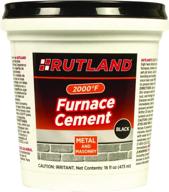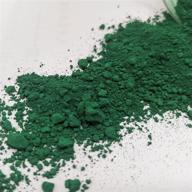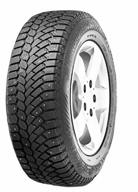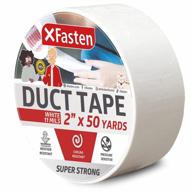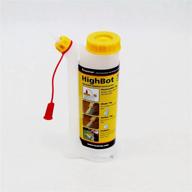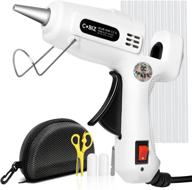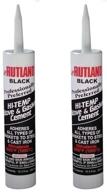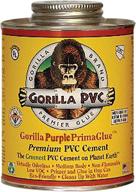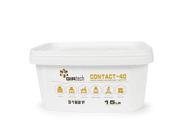Top products in 🔧 Contact Cements
Strong, Durable and Versatile - Contact Cements for All Your Projects
Contact cements are a versatile adhesive perfect for a wide variety of applications. Here's what you need to know about using these strong, durable cements for your next project.
Similar products
Benefits of Contact Cements
Contact cements offer several advantages that make them a top choice for many jobs:
- Strong, long-lasting bond on porous and non-porous surfaces like wood, metal, plastic, rubber, and more
- Fast drying and quickly reaches full strength bond
- Allows repositioning of surfaces during assembly if needed
- Great gap-filling properties
Types of Contact Cements
There are a few main types of contact adhesive to consider:
| Type | Best Uses |
|---|---|
| Standard | General purpose projects with porous and non-porous materials |
| Heavy Duty | High strength bonds for heavy materials like wood, metal, stone |
| Flexible | Bonding flexible surfaces like rubber, plastic, foam |
Application Tips
Follow these tips when applying contact cement:
- Surfaces must be clean, dry and free of any oil or debris
- Apply even coat to both surfaces and let dry 5-20 minutes until tacky
- Carefully align surfaces and press together gradually
- Smooth out any bubbles or gaps by pressing from center outward
- Allow to fully cure for at least 24 hours before use
Another interesting products
Project Ideas
Contact cement is useful for projects like:
- Woodworking
- Edge banding plywood
- Assembling furniture
- Installing wood veneer
- Repairs
- Fix tears in vinyl upholstery
- Mend rubber belts and hoses
- Bond foam insulation
With proper usage, contact cements produce durable, long-lasting bonds for all kinds of materials. Their versatility and strength make them a go-to adhesive for many household and industrial applications.
Benefits of Contact Cements
Contact cements are a versatile adhesive with many advantages over other glue types. Here are some of the top benefits of using contact cements.
Strong Adhesive Power
Contact cements create an incredibly strong, permanent bond between porous and non-porous materials. The adhesive penetrates into the surfaces and forms a tough connection that can often be stronger than the materials themselves.
Bonds Diverse Materials
Contact cements can join together a wide range of materials:
- Wood
- Metal
- Glass
- Tile
- Plastic
- Rubber
- Foam
- Fabric
- Leather
This makes them ideal for multi-material projects.
Fast Bonding
Unlike white glues or epoxies, contact cements form an instant bond. This speed makes them perfect for projects that need a fast set up time.
Gap Filling
Contact adhesives can bridge gaps between materials, allowing more variation in precision of assembly. They can fill gaps up to 3mm wide.
Easy to Reposition
During assembly, surfaces can be repositioned if needed while the cement is still tacky. This helps ensure precise alignment.
Prevents Warping
Since full contact is made during bonding, the adhesive helps prevent warping or distortion of flexible materials.
Waterproof
Contact cements form waterproof, weather-resistant bonds making them ideal for outdoor use.
With so many benefits, it's easy to see why contact cements are a top choice for demanding projects and applications.
Types of Contact Cements and Their Best Uses
There are several major types of contact cement, each formulated for specific applications and materials.
Standard Contact Cement
The most common type, ideal for:
- Woodworking projects
- Home repairs and maintenance
- Crafts
Bonds to wood, particle board, leather, fabric, plastic, metal and more.
Heavy Duty Contact Cement
Extra strong formula designed for:
- Bonding heavy materials like wood, metal, stone
- Outdoor furniture construction
- Structural repairs
Flexible Contact Cement
Remains flexible after drying, great for:
- Upholstery materials
- Foam cushion bonding
- Rubber and plastic repair
Specialty Contact Cements
Specialized versions exist for specific material bonds:
| Type | Best Uses |
|---|---|
| PVC Cement | Bonding PVC pipes and fittings |
| ABS Plastic Cement | Joining ABS plastics |
| Concrete Contact Cement | Bonding concrete materials |
Choosing the Right Cement
When selecting a contact cement, consider:
- Surfaces being bonded
- Project size and required strength
- Whether flexibility is needed
- Environmental conditions
With the range of options available, there is a contact cement suitable for just about any application you can imagine.
Tips for Applying and Using Contact Cements
Follow these guidelines to properly apply contact cement and get the best results from this versatile adhesive.
Surface Preparation
Proper surface prep is crucial:
- Clean surfaces of any dirt, grease, wax or oil
- Sand smooth non-porous materials to improve adhesion
- Use primer if recommended by manufacturer
Application
Apply contact cement using a brush or roller in a well-ventilated area. Be sure to:
- Stir cement first to avoid uneven consistency
- Apply even coat to both bonding surfaces
- Allow cement to become tacky or dry to touch based on label directions (5-20 minutes typically)
Bonding
Once cement is tacky, join surfaces together carefully as cement forms instant bond. Here are some tips:
- Align pieces precisely on first contact
- Start joining at one end and work outward to squeeze out air pockets
- Use roller to apply pressure and achieve full contact
- Work quickly once surfaces touch to avoid cemented area bonding incorrectly
Allow Proper Curing Time
Let cement cure fully before use. This may take 24-72 hours. Do not stress joint during curing period.
Example Applications
Here are some examples of contact cement use:
- Woodworking: Allow 30 minutes drying time when gluing plywood edging
- Leather repair: Apply 2 light coats for tear mending, let dry 10 minutes between coats
- Metal bonding: Sand smooth and degrease surfaces prior to cement application
Following proper techniques will ensure you get a strong, long-lasting bond from your contact cement for any project.
Contact Cement Solutions For Diy Projects
Contact cement is a versatile adhesive that can be used for a variety of DIY projects. Here are some solutions for using contact cement in your DIY projects:
- Laminate countertops: Contact cement is ideal for gluing large surfaces such as countertops in kitchens and bathrooms. Laminates are hard, thin plastic surfaces glued to countertops with contact cement.
- Applying kickplates to doors: Contact cement is perfect for attaching kickplates to doors. It forms a fast, flexible, permanent bond that will hold up to everyday use.
- Wall organizers: Contact cement can be used to create a DIY wall organizer. It forms an instant, high-strength bond on a variety of surfaces.
- Plastic laminates to wood or particleboard: Contact cement is the best adhesive for attaching plastic laminates to wood or particleboard. It forms a flexible bond with no residual moisture.
- Metal flashing onto the sides of buildings: Contact cement is commonly used for construction grade laminating, such as adhering metal flashing onto the sides of buildings. It forms a very permanent bond that will hold up to the elements.
- Creative signage and decoration: Rubber cement can be used to stick paper to windows for creative signage and decoration. It forms a non-permanent bond with another surface.
How To Apply Contact Cement On Different Surfaces?
Contact cement is a versatile adhesive that can be used on a variety of surfaces. Here are some tips for applying contact cement on different surfaces:
- Clean the surfaces: Before applying contact cement, make sure the surfaces are clean and free of dust, dirt, and debris. This will ensure a strong bond.
- Apply the adhesive: Apply the contact cement with a disposable brush or roller. Apply it to both surfaces that you'll be bonding. Lay the contact cement down with only one or two strokes.
- Let it dry: Let your bonding objects stand for 15 minutes or until they are dry. Contact cement is already dry on contact. Once the solvent evaporates, the cement forms a flexible bond with no residual moisture.
- Apply a second coat: The first coat of contact cement will soak into the surface of the workpieces, so it is recommended to apply two coats. Just make sure you let the first coat dry before applying the second one.
- Join the surfaces: Once the second coat is dry, join the two surfaces together. The most common mistake is joining the two pieces together before the second coat has dried.
- Clean up: Clean the excess contact cement off your products that you're bonding. You may do this using nail polish remover because it contains acetone.
- Safety precautions: When using contact cement, it is important to take the necessary safety precautions. Contact cement is flammable and should be used in a well-ventilated area. It is also important to wear gloves and eye protection.
Remember that contact cement bonds on contact, so it is important not to rush the process. Take your time and follow these tips for a successful application.







